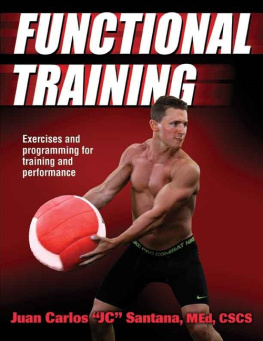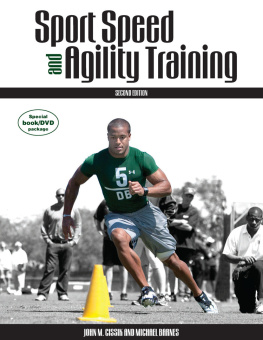KETTLEBELL TRAINING FOR ATHLETES
DEVELOP EXPLOSIVE POWER AND STRENGTH FOR MARTIAL ARTS, FOOTBALL, BASKETBALL, AND OTHER SPORTSDAVE BELLOMO PHOTOGRAPHY BY BRUCE CURTIS


Copyright 2010 by Dave Bellomo and Bruce Curtis. All rights reserved. Except as permitted under the United States Copyright Act of 1976, no part of this publication may be reproduced or distributed in any form or by any means, or stored in a database or retrieval system, without the prior written permission of the publisher. ISBN: 978-0-07-163709-1 MHID: 0-07-163709-5 The material in this eBook also appears in the print version of this title: ISBN: 978-0-07-163588-2, MHID: 0-07-163588-2. All trademarks are trademarks of their respective owners. Rather than put a trademark symbol after every occurrence of a trademarked name, we use names in an editorial fashion only, and to the benefit of the trademark owner, with no intention of infringement of the trademark.
Where such designations appear in this book, they have been printed with initial caps. McGraw-Hill eBooks are available at special quantity discounts to use as premiums and sales promotions, or for use in corporate training programs. To contact a representative please e-mail us at bulksales@mcgraw-hill.com. TERMS OF USE This is a copyrighted work and The McGraw-Hill Companies, Inc. (McGraw-Hill) and its licensors reserve all rights in and to the work. Use of this work is subject to these terms.
Except as permitted under the Copyright Act of 1976 and the right to store and retrieve one copy of the work, you may not decompile, disassemble, reverse engineer, reproduce, modify, create derivative works based upon, transmit, distribute, disseminate, sell, publish or sublicense the work or any part of it without McGraw-Hills prior consent. You may use the work for your own noncommercial and personal use; any other use of the work is strictly prohibited. Your right to use the work may be terminated if you fail to comply with these terms. THE WORK IS PROVIDED AS IS. McGRAW-HILL AND ITS LICENSORS MAKE NO GUARANTEES OR WARRANTIES AS TO THE ACCURACY, ADEQUACY OR COMPLETENESS OF OR RESULTS TO BE OBTAINED FROM USING THE WORK, INCLUDING ANY INFORMATION THAT CAN BE ACCESSED THROUGH THE WORK VIA HYPERLINK OR OTHERWISE, AND EXPRESSLY DISCLAIM ANY WARRANTY, EXPRESS OR IMPLIED, INCLUDING BUT NOT LIMITED TO IMPLIED WARRANTIES OF MERCHANTABILITY OR FITNESS FOR A PARTICULAR PURPOSE. McGraw-Hill and its licensors do not warrant or guarantee that the functions contained in the work will meet your requirements or that its operation will be uninterrupted or error free.
Neither McGraw-Hill nor its licensors shall be liable to you or anyone else for any inaccuracy, error or omission, regardless of cause, in the work or for any damages resulting there from. McGraw-Hill has no responsibility for the content of any information accessed through the work. Under no circumstances shall McGraw-Hill and/or its licensors be liable for any indirect, incidental, special, punitive, consequential or similar damages that result from the use of or inability to use the work, even if any of them has been advised of the possibility of such damages. This limitation of liability shall apply to any claim or cause whatsoever whether such claim or cause arises in contract, tort or otherwise.
An Introduction to Kettlebells
Kettlebells have been around for more than a century. They were used extensively by the performing strongmen of the circuses during the late 1800s.
Some strength historians will argue that kettlebells have existed for many centuries, dating back to when the Celts made them from stone. Whatever the case may be, kettlebells are making an amazing comeback in the strength and conditioning of athletes as well as in the everyday fitness programs of people around the world. In recent years martial artists have been using kettlebells extensively in conditioning programs. These programs are designed to build strength and stamina without adding the unnecessary bulk of conventional bodybuilding programs. Also, the Russian sport of Girevoy has increased in popularity in those same circles. The object of Girevoy is to perform the highest number of repetitions you can with a fixed weight in the events of the clean and jerk (two kettlebells), the single snatch, and the single push-press.
It is a very popular sport in Eastern Europe and has been growing in the United States as well. Kettlebells, also called ring weights, come in many shapes and sizes. From cylinders to square blocks, the most common design resembles a cannonball with a handle on one side. This design has many advantages over the others, including the absence of sharp edges as well as an easier fit to the users body. These implements differ from dumbbells because the weight is distributed to one end rather than being even. This makes them ideal for performing ballistic, whole-body exercises such as cleans, snatches, and their variations.
Kettlebells can be used either individually or in pairs. Unlike dumbbells, kettlebells are user friendly for performing movements such as the squat-pull because the weight distribution allows for comfort and correct body positioning. These Old World weights are not just for the elite strongmen seen on television. Anyone who is healthy enough to strength train can learn to use kettlebells. Whether you are a great athlete or a great-grandmother, these simple tools will help you produce the most extraordinary results you have ever seen. Kettlebell training is arguably the most effective and efficient form of strength training ever created.
It is based upon whole-body, real-life movements that would be labeled as functional by todays so-called fitness experts. It is not that we are inventing this kind of training, only rediscovering it. Fitness machines typically work in only one plane of movement, such as forward and backward or side to side. Many kettlebell exercises, however, incorporate movement into more than one plane, just as people move in real life. These implements can be used in a slow, controlled manner or explosively. They can be used to isolate a muscle, as well as for big, whole-body movements.
Kettlebells are not only versatile but also extremely durable and cost-effective. They are so space efficient that they will even fit under your bed when you are finished with your workout.
My Kettlebell Journey
I first encountered kettlebell training when I enrolled in a sport judo program, approximately a decade ago. I like to refer to this period in my life as my early midlife crisis. I was too old for college-level sports programs, but I still had some competitive energy left in me. I figured that my background as a competitive powerlifter and my prior athletic experience would give me a huge advantage.
I could not have been more wrong. Every class I took my first few months was the physical equivalent of being in a minor car wreck. I hurt everywhere and was getting very discouraged. My wife saw me walk in my front door one night bleeding from my feet and hands and hobbling like I was a hundred years old. She asked, Why are you doing this to yourself? My response was, in my trademarked stubborn tone, Im going through this until I am able to do this to someone else. It was really an artificially brave face.
I was almost ready to quit. Sensing I was unhappy with my progress, my instructor finally walked into my office and said, Youre strong, but you dont have the right kind of strength. After my ego recovered, I realized he was absolutely correct. There are many different types of strength, and each sport or task requires something different. I was strong for powerlifting. I had a strong press and a strong back and thighs to grind out a big squat, but I lacked explosiveness as well as twisting power in my trunk that was required for throwing.



![Cotter - Kettlebell training: [95 exercises for strength, toning, stamina, and weight loss]](/uploads/posts/book/196732/thumbs/cotter-kettlebell-training-95-exercises-for.jpg)




 Copyright 2010 by Dave Bellomo and Bruce Curtis. All rights reserved. Except as permitted under the United States Copyright Act of 1976, no part of this publication may be reproduced or distributed in any form or by any means, or stored in a database or retrieval system, without the prior written permission of the publisher. ISBN: 978-0-07-163709-1 MHID: 0-07-163709-5 The material in this eBook also appears in the print version of this title: ISBN: 978-0-07-163588-2, MHID: 0-07-163588-2. All trademarks are trademarks of their respective owners. Rather than put a trademark symbol after every occurrence of a trademarked name, we use names in an editorial fashion only, and to the benefit of the trademark owner, with no intention of infringement of the trademark.
Copyright 2010 by Dave Bellomo and Bruce Curtis. All rights reserved. Except as permitted under the United States Copyright Act of 1976, no part of this publication may be reproduced or distributed in any form or by any means, or stored in a database or retrieval system, without the prior written permission of the publisher. ISBN: 978-0-07-163709-1 MHID: 0-07-163709-5 The material in this eBook also appears in the print version of this title: ISBN: 978-0-07-163588-2, MHID: 0-07-163588-2. All trademarks are trademarks of their respective owners. Rather than put a trademark symbol after every occurrence of a trademarked name, we use names in an editorial fashion only, and to the benefit of the trademark owner, with no intention of infringement of the trademark.